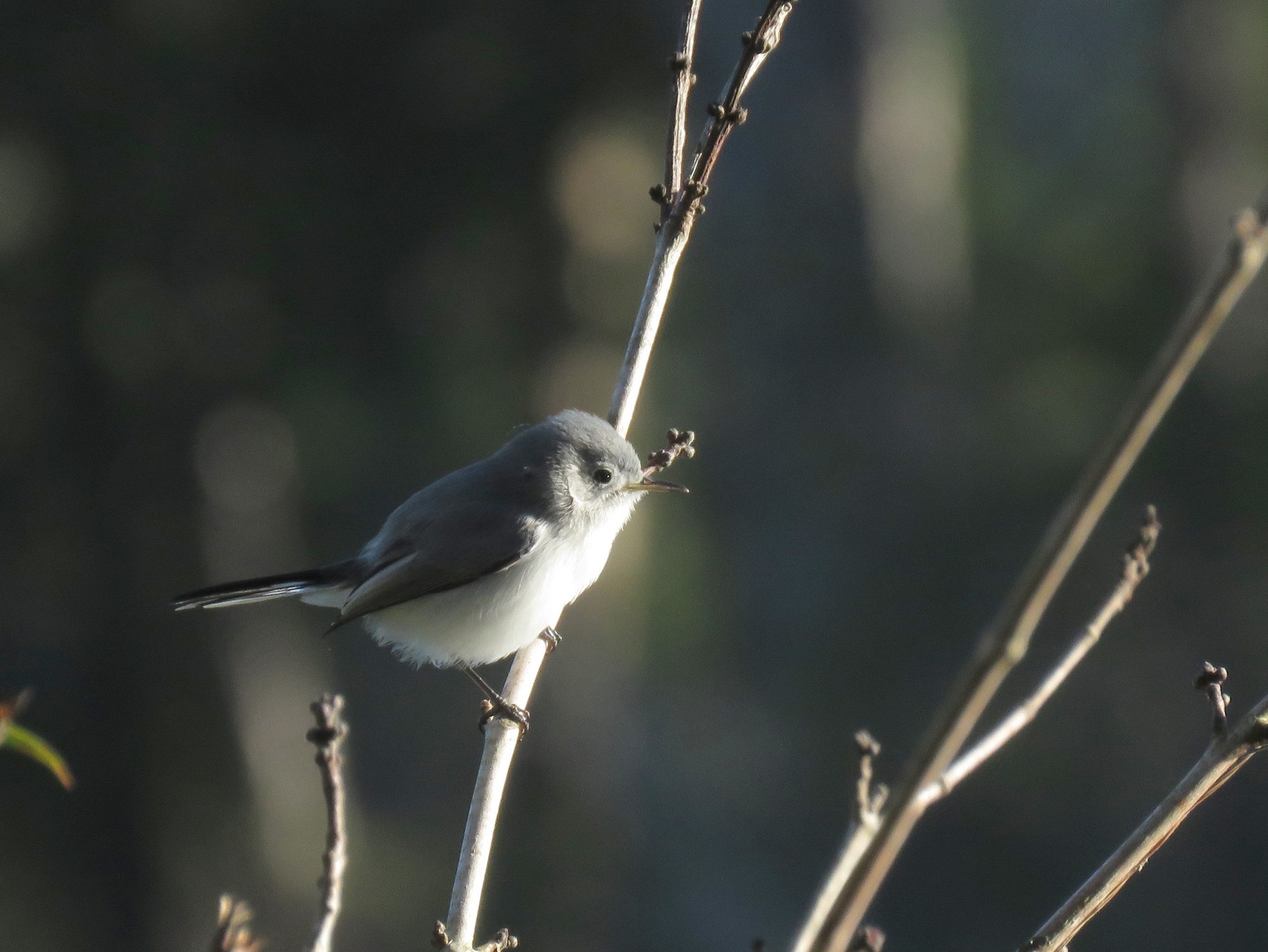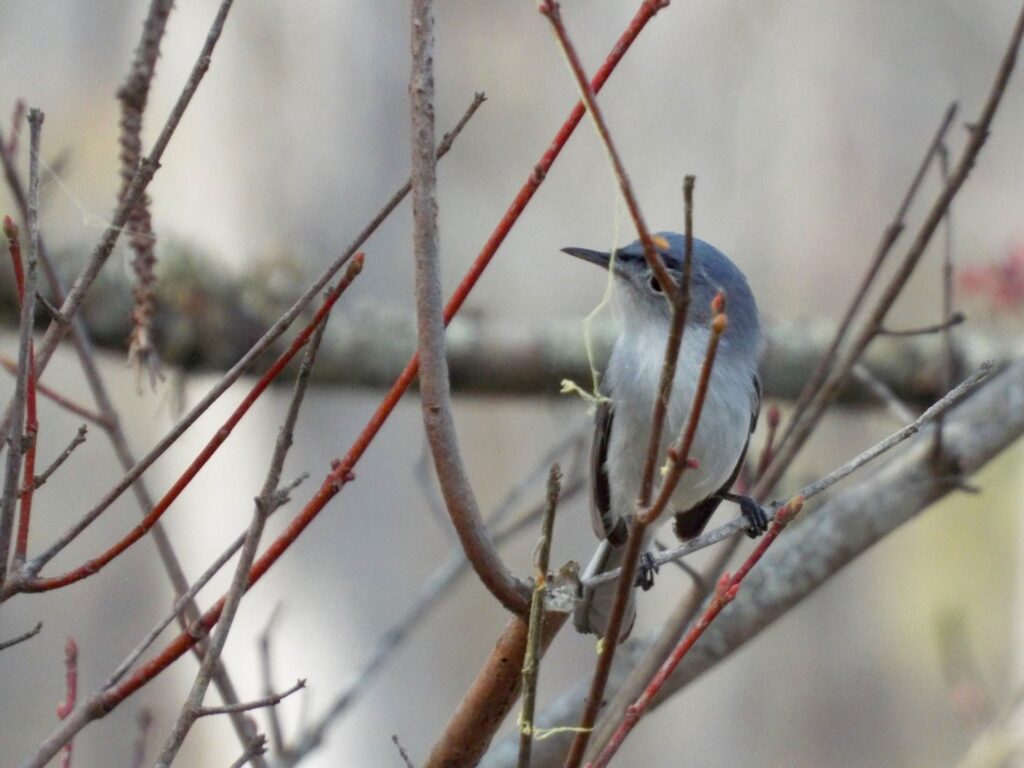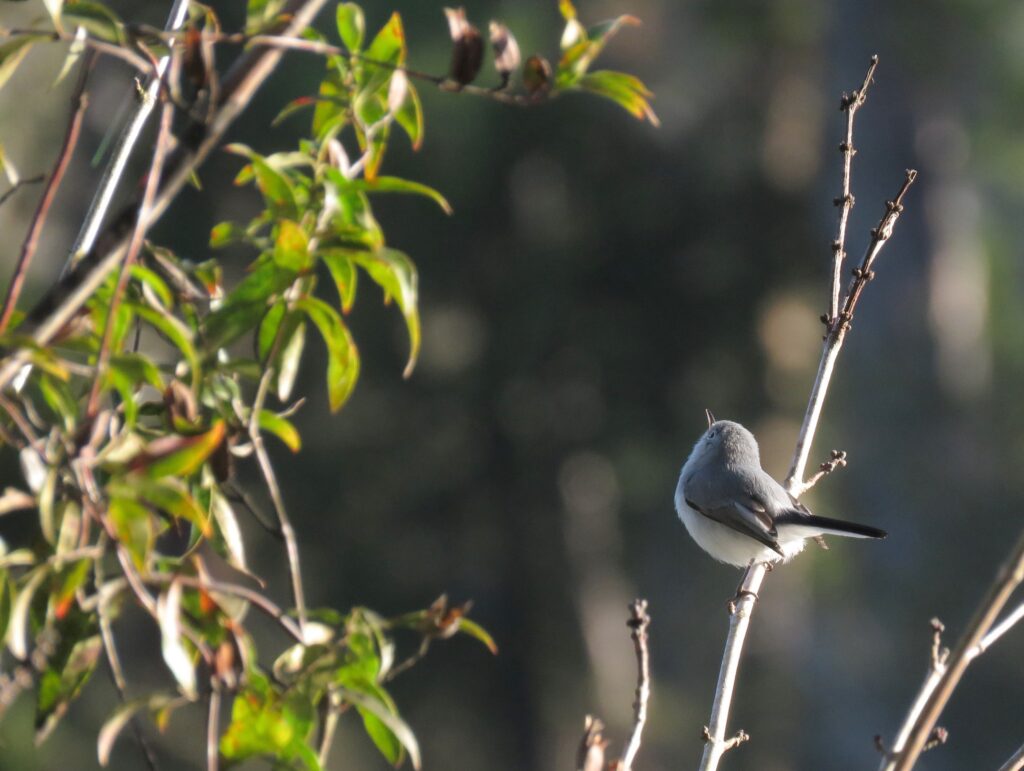


The week for Flora and Fauna Friday we have a petite and precocious songbird: the Blue-gray Gnatcatcher (Polioptila caerulea).
The Blue-gray Gnatcatcher is our only representative of the Gnatcatcher family here in South Carolina. The Gnatcatchers are most closely related to Wrens. The Blue-gray Gnatcatcher is found throughout the eastern United States and all of the Palmetto State. They’re most common throughout the warm seasons but are a year-round resident in some corners of the Lowcountry.
Blue-gray Gnatcatchers are, simply put, a wee little bird. It’s not as wee as a Hummingbird or Kinglet, but it’s sufficiently small enough to fit the bill. Their plumage is a cool white beneath with a back a shade between aluminum-blue and gunmetal-gray. A black tail with white corners and a heavy white eye-ring supply the needed accents. Males take a bluer hue in breeding season and year-round they wear a black unibrow, giving him an expression of perpetual irritation. Blue-gray Gnatcatchers have an active lifestyle and, much like Kinglets, seem to be in perpetual motion. They bounce and bound between bushes, calling all the while. Their call is a nasally plaintive whine. It’s hard to describe but easy to recognize. Blue-gray Gnatcatchers are gleaners, they move from plant to plant, branch to branch, leaf to leaf in search of any opportunities for nutritious morsels that may present themselves. Their diet consists entirely of invertebrates, but only small ones.
Their preferred habitats are moist broadleaf forests but they can be found in a broad range of ecosystems and forest types. Gnatcatchers nest in trees by building a camouflaged cup to cradle their eggs. Their nest is small, compact, cozy, and anchored to a tree branch or crook with a copious amount of spider webs. The nest is constructed of moss and grass and lined with fuzzy seeds, animal hair, and feathers. It is all then glued together with spider silk. To help blend in with the bark background, the nest is then plastered in a layer of lichen, matching it perfectly to the surrounding lichen lined limb.